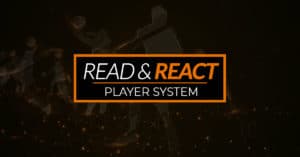During last month’s Read & React Clinic in Detroit, I got the opportunity to spend some time with a coach who ran a basketball club in Ireland. His club ranged from ages 6 – 64. They had chosen the R&R as their club curriculum and thus had begun to implement it on every level. Almost 500 players (350 under 17 years old) running the Read & React.
This all sounded fairly typical to me at first, but then he mentioned that his club was all volunteer and all inclusive, meaning they took anyone who wanted to play – even troubled youth or those youth that had been rejected by all other clubs (because of behavior). With talent usually lacking, no gym, and only 3 hours of practice time a week, their motto had jokingly been, “We’ll travel anywhere to lose”.
Of course, winning is not their primary goal – helping kids is their focus.
But the point of this post is not their success story – I’ll put that somewhere else. The point is the power of tiny successes.
He mentioned that putting in the Read & React had some unpredictable side effects: the kids began to behave better, treat each other better, and ultimately because of that, play better.
Before the Read & React, the better players could make any mistake they wanted and blame the poor result on the poorer players (who didn’t know any better). For example, a player drives and loses the ball. His initial reaction is to look at a weaker player and say, “I wouldn’t have lost the ball if you had done this, or been there, or whatever.”
Of course, that’s not true. He lost the ball due to his own carelessness, but the younger/weaker/lower basketball IQ player doesn’t know that. So, we have a situation where a stronger player can freely pass blame and a weaker player feels badly about himself because he really believes that he was wrong.
After the Read & React, however, the younger player knows what his responsibilities are (with each and every action of the ball). It empowers him.
“You can’t tell me that I was supposed to be there because I know that I was supposed to be here.”
And everyone else knows it too (even the stronger players). The result: the stronger players no longer have the crutch of being able to blame poor decisions on others and became smarter players themselves. And, if that weren’t enough, since the stronger players now had a clear curriculum, they began to help teach the weaker players. This raised the level of the whole team. The weaker players gained confidence and began to contribute more.
Blaming to teaching. Distress to confidence. How could a team’s winning percentage not improve?
I’ve spent some time over the last month thinking about this story and I’ve had some ideas as to why the Read & React can thrive in the youth game.
Hundreds of Tiny Successes
Think about the basic philosophy of the R&R – each action of the ball creates one and only one reaction from the other players on the court. If the ball drives right, everyone Circle Moves right. If the ball passes one spot to the left, the passer must cut and the rest must fill.
Now, let’s look at each action of the ball as the opportunity for a tiny success (as a team and as individuals). If the ball drives right and you move one spot the the right, then you just chalked up a success. If you pass the ball one spot and cut, then check off a success. Each action of the ball can create one success for every player on the court.
That means that each possession could lead to 3 or 5 or 10 tiny successes for each player (depending on the length of the possession). So, each game could have hundreds of opportunities for tiny successes.
Can you think of a better way to build confidence in a youth player who doesn’t yet have the skills to achieve the large successes of scoring, stealing, breaking presses, rebounding, etc? In the most extreme cases a weaker player could achieve piles of successes each game without ever touching the ball.
As a coach, the Read & React has given you a system by which you can emphasize those tiny successes, track them, and celebrate them as a player contributing to the team (even if they don’t put any points on the board).
That’s how players who aren’t naturally gifted can gain traction in the game (and ultimately improve) – one tiny success at a time. Eventually, those tiny successes may lead to larger successes.
Oh, and the club has since dropped their previous motto, “We’ll travel anywhere to lose” because to the chagrin of their opponents, it’s no longer accurate.






